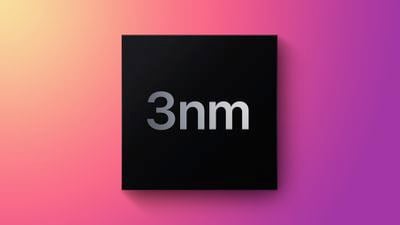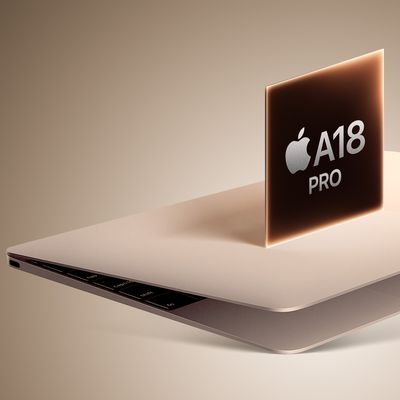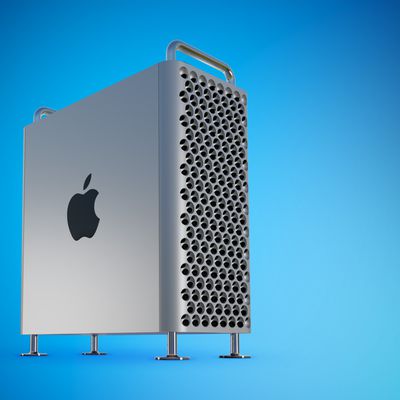Apple Likely to Be Only Major Device Maker With 3nm Chips in 2023 as Qualcomm Reportedly 'Caught In a Dilemma'
Apple could be one of the only major device makers in 2023 to adopt the newer and more advanced 3nm process technology, as Qualcomm and MediaTek are unclear on whether the newer process is worth it.

According to a report by DigiTimes, Qualcomm and MediaTek, two of the largest chip makers, remain unsure on whether they want to follow in Apple's footsteps and start producing 3nm chips in 2023. The chip makers are reportedly undecided given the "unclear sales prospects for Android handsets."
Qualcomm and MediaTek, however, have not yet made a clear decision on whether to join the 3nm camp this year, despite both hoping to keep up with Apple's process upgrade for their flagship mobile SoCs, the sources continued.
The sources stressed that uncertain market outlook for non-Apple handsets and 3nm manufacturing cost already exceeding US$20,000 per wafer are likely to deter both handset AP specialists from launching 3nm SoCs later in the year.
Both Qualcomm and MediaTek are "caught in a dilemma over whether to follow Apple's process upgrade in 2023," the report notes. Qualcomm provides chips for many high-end Android flagships, including Samsung phones. The report notes that Qualcomm may have no choice but to adopt 3nm process technology if Samsung wants to "meet competition from Apple in the flagship handset market."
Apple is widely expected to adopt TSMC's 3nm technology this year, including for the iPhone 15 Pro and iPhone 15 Ultra's A17 Bionic chip. TSMC's mass production of 3nm chips has already started ahead the launch of the first Apple devices that will use the technology later this year.
Popular Stories
Apple is not expected to release a standard iPhone 18 model this year, according to a growing number of reports that suggest the company is planning a significant change to its long-standing annual iPhone launch cycle.
Despite the immense success of the iPhone 17 in 2025, the iPhone 18 is not expected to arrive until the spring of 2027, leaving the iPhone 17 in the lineup as the latest...
Language learning app Duolingo has apparently been using the iPhone's Live Activity feature to display ads on the Lock Screen and the Dynamic Island, which violates Apple's design guidelines.
According to multiple reports on Reddit, the Duolingo app has been displaying an ad for a "Super offer," which is Duolingo's paid subscription option.
Apple's guidelines for Live Activity state that...
The company behind the BlackBerry-like Clicks Keyboard accessory for the iPhone today unveiled a new Android 16 smartphone called the Clicks Communicator.
The purpose-built device is designed to be used as a second phone alongside your iPhone, with the intended focus being communication over content consumption. It runs a custom Android launcher that offers a curated selection of messaging...
Apple's restrained artificial intelligence strategy may pay off in 2026 amid the arrival of a revamped Siri and concerns around the AI market "bubble" bursting, The Information argues.
The speculative report notes that Apple has taken a restrained approach with AI innovations compared with peers such as OpenAI, Google, and Meta, which are investing hundreds of billions of dollars in data...
The Apple Fitness+ Instagram account today teased that the service has "big plans" for 2026. In a video, several Apple Fitness+ trainers are shown holding up newspapers with headlines related to Apple Fitness+.
What's Apple Fitness+ Planning for the New Year?
Something Big is Coming to Apple Fitness+
The Countdown Begins. Apple Fitness+ 2026 is Almost Here
2026 Plans Still Under ...
Apple plans to introduce a 12.9-inch MacBook in spring 2026, according to TrendForce.
In a press release this week, the Taiwanese research firm said this MacBook will be aimed at the entry-level to mid-range market, with "competitive pricing."
TrendForce did not share any further details about this MacBook, but the information that it shared lines up with several rumors about a more...
Apple hasn't updated the Mac Pro since 2023, and according to recent rumors, there's no update coming in the near future. In fact, Apple might be finished with the Mac Pro.
Bloomberg recently said that the Mac Pro is "on the back burner" and has been "largely written off" by Apple. Apple apparently views the more compact Mac Studio as the ideal high-end pro-level desktop, and it has almost...
Apple today announced a number of updates to Apple Fitness+ and activity with the Apple Watch.
The key announcements include:
New Year limited-edition award: Users can win the award by closing all three Activity Rings for seven days in a row in January.
"Quit Quitting" Strava challenge: Available in Strava throughout January, users who log 12 workouts anytime in the month will win an ...
![]()










 ('https://www.macrumors.com/2023/01/04/apple-3nm-chips-in-2023/')
('https://www.macrumors.com/2023/01/04/apple-3nm-chips-in-2023/')












